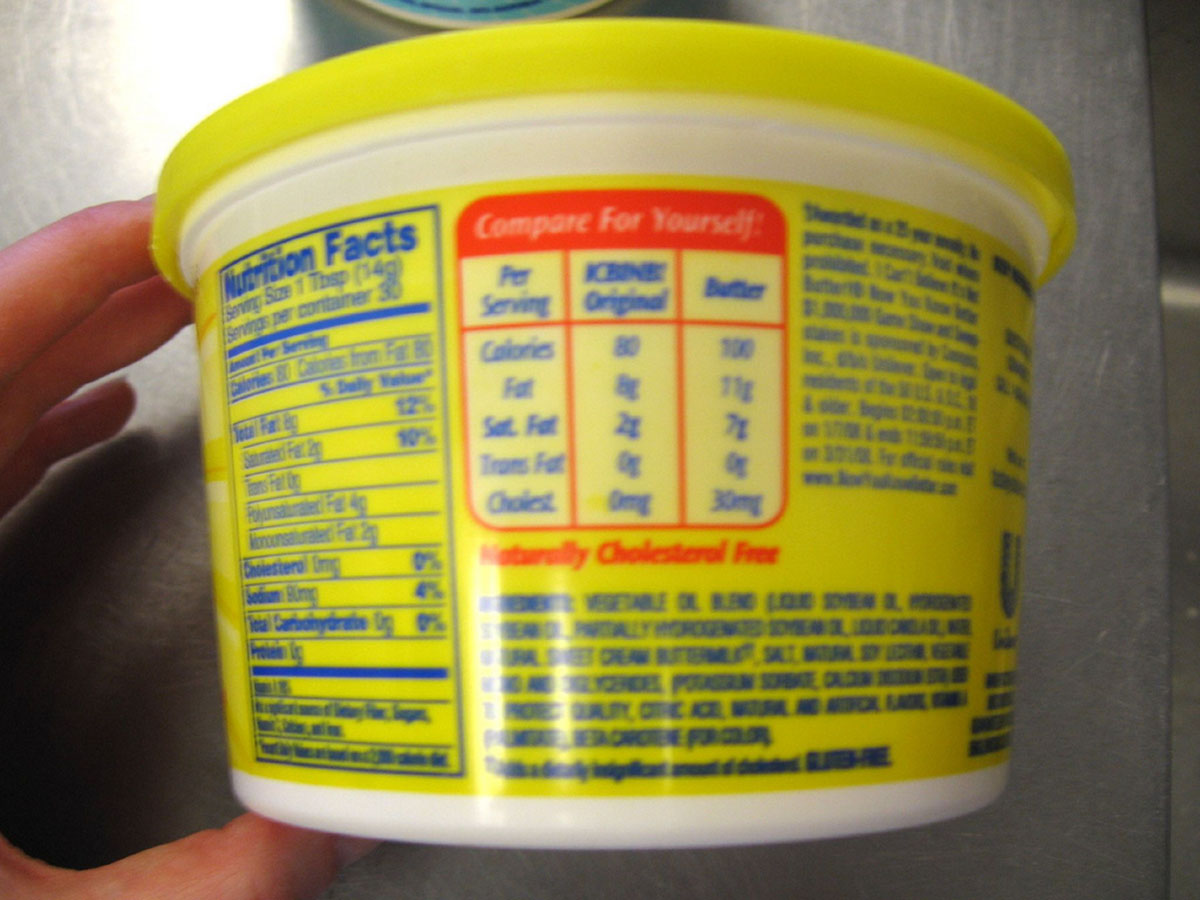The nutrition label hasn't changed its characteristic for the last 20 years, except a small change in 2006 when the Food and Drug Administration added information about trans fat. The FDA is now determined in their decision to change the label on most processed food products in the U.S. The new label will emphasize total calories, certain nutrients like vitamin D or potassium and added sugars. They are also removing “calories from fat” and changing the serving sizes, since hardly anybody stops drinking juice, or eating something after finishing one serving size. New information will make the whole soda bottle or package of cookies one serving — making the calorie counting much simpler.

The FDA claims it's more important to know what type of fat we are consuming than how much calories it has. New labels will also note the information about added sugars. This is also very important change since it was really hard — not to say impossible — to tell how much of a natural sugar product had and how much was added in the manufacturing process. To sum up, the new label will focus on specific nutrients and total calories in each serving, one serving being the whole purchased product.
A British health organization Royal Society for Public Health has been advocating adding “exercise equivalents” for each product. For example, if we buy soda, they suggest it would be good to have the information how much running or walking would burn off calories from the soda, or any other processed food. The idea behind this is to teach people to be mindful about the amounts of energy that is being consumed, and how the specific food relates to specific activities in their every day lives. It's about encouraging people to be more active. Although we find prompting people to be mindful of the energy they consume a very good idea, it would probably bring even more confusion because it would be hard for some people to realize that no one burns the same amount of calories, not even for the same activity.
Perhaps it would be a good idea to put the information that only natural and real food can improve nation's overall health. When you eat diet full of fruit, vegetables, whole grains, healthy fats, nuts and seeds, you don't have to read labels. They don't mean much when you feed your body well because all calories are not equal. It's not the same if you have plate full of broccoli or a can of soda. Even if the number of calories is similar, nutritiously – they can't even be compared.
READ American Food Makers Change Nutritional Labeling for First Time in Nearly 50 Years
If your soda has zero calories, it means it has artificial flavors like sucralose or aspartame, equally bad or worse for your health than regular soda. If your mayo says “fat free” we bet it's higher in sugars and additives than usual mayonnaise, because they have to compensate for the taste. It's useful to know what ingredients our cookies have, but it's even better to realize those cookies are not real food and consume them mindfully, because no ban or label can keep us healthy and in shape, only common sense.
Importance Of FDA's Trans Fat Ban
This change will impact everyone in America, and estimates are it will prevent more than 20.000 heart attacks and mean 7.000 fewer deaths caused by them per year. Trans fat is definitely no longer considered safe for human consumption and banning it will be a big step forward. We've been intensively hearing about how bad trans-unsaturated fats are for more than a decade, and it was about time to do something about them. Two years is a long time to wait, but better late than never.

What Is Trans Fat
There are two kinds of trans-unsaturated fats occurring in our food: natural and artificial trans fats. Natural fats are found in guts of some ruminant animals, and foods like meat and milk may contain some small quantities. Artificial trans-unsaturated fats are those industrially created by adding hydrogen to liquid oils.
Partially hydrogenated oil — widely known as trans fat — is mostly solid fat like margarine or shortening. It can significantly enhance flavor and increase the shelf life to majority of processed foods. For years, we have heard how important it is to consume these fats only in small amounts, or even better — not at all, yet again, they were everywhere.
READ What Nutrition Labels Don't Tell You
Why Are We Still Using It
Partially hydrogenated oils were introduced in human diet at the beginning of the 19th century in the form of shortening for pies and pastries. Wider consumption began in 1950's when rather badly done study recommended replacing butter for margarine. For longer than 50 years, people mistakenly believed that margarine could save their hearts.
They're widely used because they are inexpensive and last very long. Trans fatty acids give texture and taste to most of the processed foods like microwave popcorn, desserts, frozen pizza or coffee creamers. Many fast-food restaurants still use them for deep frying since these oils can be repeatedly used in large commercial fryers.
READ Reading The Ingredient Label: What To Look For
Together with the new and more user-friendly FDA nutrition label on the way, which will show added sugars and calories per whole package — not per serving like it did before — this is a good way the world is headed, at least nutrition-wise. It's a shame to die early only because something was bringing more money to multi-billion dollar companies. Although trans fats are the biggest evil, we shouldn't let this ban give us false sense of security. Saturated fats are still going to be a big problem, but one thing at a time. Just remember, only mindful eating can make us healthy, and feel and look good in the long run.
- Photo courtesy of jdickert: www.flickr.com/photos/jdickert/2382425063/
- Photo courtesy of cyclonebill: www.flickr.com/photos/cyclonebill/2222309331/
- Photo courtesy of jdickert: www.flickr.com/photos/jdickert/2382425063/
- www.fda.gov/Food/GuidanceRegulation/GuidanceDocumentsRegulatoryInformation/LabelingNutrition/ucm385663.htm
- www.fda.gov/Food/GuidanceRegulation/GuidanceDocumentsRegulatoryInformation/LabelingNutrition/ucm387533.htm
- nofusa.org/news/fda-changing-nutrition-facts-labeling-sugar/
- www.nytimes.com/2015/06/17/health/fda-gives-food-industry-three-years-eliminate-trans-fats.html?_r=0


Your thoughts on this